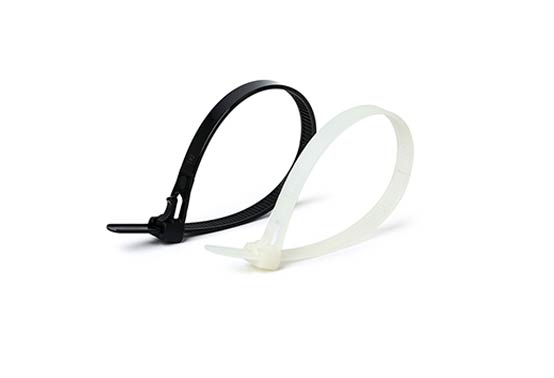Tel
0577-62795555
Tel
0577-62795555
Nylon tie straps have their presence in both industrial production and daily life. Generally, in daily life, the requirements for nylon tie straps are not high, and few people pay attention to some of their common issues. However, the use of nylon tie straps in industrial production has more stringent requirements. This article will guide you through some problems and usage rules to be aware of when applying nylon tie straps, as well as how to identify the quality of nylon tie straps.
When applying nylon tie straps
The diameter of the bound object should be smaller than the diameter of the nylon cable tie, and after binding, the remaining length of the strap should be5-8cm. It is advisable.Nylon cable tiescan maintain excellent mechanical properties and heat aging resistance within the common temperature range (-40~120°C).
When nylon tie straps are used in the environment
Nylon cable tiescan maintain excellent physical properties in a humid environment. Nylon cable ties have hygroscopicity; as the humidity (moisture content) increases, they exhibit higher elongation and impact strength, but tensile strength and rigidity gradually decrease. Note that when using, do not leave the cable ties exposed to direct sunlight, as this can easily affect the product's properties. If the working environment requires prolonged exposure to sunlight, it is best to choose aging-resistant cable tie products and keep them away from heat sources.
When controlling the application of nylon tie straps
Apply tensile force; do not exceed the tensile strength of the nylon tie straps, otherwise, breakage will occur.
Nylon cable ties possess excellent insulation
Electrical rated temperatures below105 degrees do not affect its properties, and the flame retardant level reaches UL 94V-2.
The most critical assessment point of nylon tie straps is their disengagement force. When a certain force is applied, whether it is the strap breaking, reverse teeth, or head cracking, the discontinuation must occur above the nominal tensile strength value, meaning the nylon tie straps must have sufficient tensile strength. Each specification has stipulations for tensile strength requirements.
It is particularly important to highlight that the key areas of nylon tie straps are the toothed belt part and the head’s teeth cavity. These parts are crucial, so carefully inspect the toothed belt part; there should be no residual teeth. The top inside surface of the teeth cavity should not have stepped mold deviation marks; otherwise, severe slipping and interlocking issues may occur, resulting in a product that is almost unusable.
Nylon cable ties belong to plastic products. Ordinary nylon tie straps have a temperature range of use between-20 degrees to 85 degrees. Beyond this temperature range, either at too high or too low temperatures, nylon tie straps can become brittle, yellow, or break easily. If special environments require usage, select products with materials resistant to high or low temperatures.



